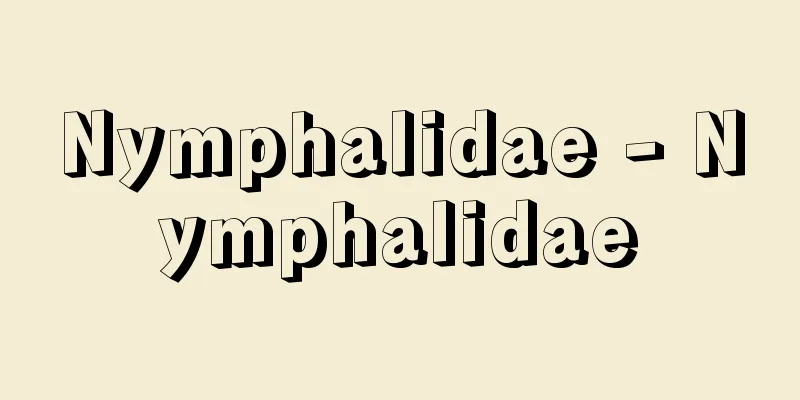Glow discharge

|
A type of discharge in gas. It is a steady discharge that is supplied when the temperature of the cathode is low and positive ions accelerated by the voltage drop in front of the cathode collide with the cathode and knock out electrons. It takes a typical form in low-pressure discharges when the current is relatively small, at several tens of milliamperes. Within a certain range, the voltage between the electrodes remains almost constant even if the current is changed, but if the current increases beyond this range, the temperature of the cathode rises and it transitions to an arc discharge that emits thermoelectrons. [Tadatoshi Azuma] Glow discharge structureIn a glow discharge, there are areas of strong and weak light along the discharge path. There is a very thin dark area near the cathode, called the Aston dark space. Next is the light-emitting area called the cathode glow, and a slightly darker area called the cathode dark space or Crookes dark space. Next is the negative glow, which is the brightest area of light. Here, ionization and excitation of atoms and molecules occurs most actively. After the negative glow, there is another area of weak light, called the Faraday dark space. This is because the electrons lose energy in the negative glow and lose their ability to excite atoms. Next is the light-emitting area called the positive column. The light emitted by the positive column is weaker than that of the negative glow, and the color of the light is generally different. Near the anode of the positive column, there is a slightly brighter area called the anode glow. Between the anode and the anode glow, the light is slightly weaker and is called the anode dark space. Of the above parts, depending on the type of gas and discharge conditions, the Aston dark space, anode dark space, and anode glow may not be observed. The length of each part other than the positive column is determined by the type and pressure of the gas. Therefore, as the distance between the cathode and anode is reduced, the positive column first becomes shorter and eventually disappears. Then, from the anode side, the anode glow, Faraday dark space, and negative glow disappear. A glow discharge in which the negative glow has disappeared is a discharge in which fluorescence is emitted from the glass near the anode by cathode rays. If the cathode dark space disappears, the discharge can no longer be maintained. [Tadatoshi Azuma] Applications of glow dischargeGlow discharge is a stable discharge and is therefore widely used. Red neon signs use the red light emitted by the neon positive column. However, all other colors use mercury glow discharge, converting the ultraviolet light emitted by mercury atoms into various colors using phosphors. Neon tubes use the negative glow of neon, while fluorescent lamp starters use the cathode heating of glow discharge to make a bimetal blink. White fluorescent lamps using mercury glow discharge were commonly used as backlights for LCD TVs due to their long life span, but since around 2010 they have been replaced by highly efficient LED (light-emitting diode) lamps. [Tadatoshi Azuma] [Reference] | | | |Source: Shogakukan Encyclopedia Nipponica About Encyclopedia Nipponica Information | Legend |
|
気体中の放電の一形式。陰電極の温度が低く、陰極前面の電圧降下によって加速された陽イオンが陰極に衝突し、電子をたたき出すことによって供給される定常放電をいう。低気圧放電において、電流が数十ミリアンペアと比較的小さいとき、典型的な形をとる。ある範囲内では、電流を変化させても、電極間の電圧はほぼ一定となる特徴をもつが、この範囲を超えて電流が増加すると、陰極の温度が上昇し、熱電子を放出するアーク放電へと移行する。 [東 忠利] グロー放電の構造グロー放電では放電路に沿って発光の強いところと弱いところが生ずる。陰極の近くに非常に薄い暗い部分があり、アストン暗部とよばれる。ついで陰極グローとよばれる発光部分があり、さらにやや暗い部分を陰極暗部またはクルックス暗部とよぶ。ついでもっとも明るい発光部分である負グローがある。ここでは原子や分子の電離および励起がもっとも盛んにおこっている。負グローの次には、発光が弱い部分がまた現れ、ファラデー暗部という。これは、電子が負グロー中でエネルギーを失い、原子を励起する能力をなくしているためである。ついで陽光柱とよばれる発光部がある。陽光柱の発光は負グローより光が弱く、また一般に光の色も違っている。陽光柱の陽極近くには、やや明るい部分があり陽極グローとよばれる。陽極と陽極グローの間は、発光がやや弱く陽極暗部という。以上の各部のうち、気体の種類や放電条件によっては、アストン暗部と陽極暗部、陽極グローは認められないこともある。陽光柱以外の各部の長さは、気体の種類と圧力によって決まっている。そのため陰極と陽極の間隔を近づけていくと、まず陽光柱が短くなり、ついにはなくなる。ついで陽極側から陽極グロー、ファラデー暗部、負グローとなくなっていく。負グローがなくなったグロー放電は、陰極線により陽極付近のガラスから蛍光が発せられる放電である。さらに陰極暗部がなくなると、もはや放電は維持できない。 [東 忠利] グロー放電の応用グロー放電は安定した放電であるため、よく利用される。赤色のネオンサインは、ネオンの陽光柱の赤色の発光を利用したものである。ただし、赤色以外のものは水銀のグロー放電を利用したもので、水銀原子の発する紫外線を蛍光体でいろいろの色に変えている。ネオン管はネオンの負グローを利用し、蛍光ランプの点灯管(グロースターター)は、グロー放電の陰極加熱を利用してバイメタルを点滅させる。水銀のグロー放電による白色蛍光ランプは長寿命が得られるため液晶テレビのバックライトとして常用されていたが、2010年ころ以後は高効率のLED(発光ダイオード)ランプに置き換えられつつある。 [東 忠利] [参照項目] | | | |出典 小学館 日本大百科全書(ニッポニカ)日本大百科全書(ニッポニカ)について 情報 | 凡例 |
<<: Globokar - Vinko Globokar (English spelling)
Recommend
Kıbrıs Türk Fedele Devleti
…It became an independent republic in 1960, joine...
Rubeshibe [town] - Rubeshibe
A former town in Tokoro County, eastern Hokkaido. ...
Open Conference - Open Conference
…As a result, conferences on American routes are ...
Guide - Douin
〘noun〙① To lead; to give directions. ※Engishiki (9...
Karibu Kyosei Noudan - Karibu Kyosei Noudan
...It also has a facility for the disabled, Oyama...
Chelate compound - Chelate compound
Molecules or polyatomic ions that can simultaneou...
marking
...The fact that song is a no-trespassing signal ...
Enmeigiku (prolonged life chrysanthemum) - Enmeigiku
…There are many flowers with the name daisy, such...
Clothing and hat - Ehatsu
〘Noun〙 Buddhist term. ① (Abbreviation of "san...
Amphiuma means (English spelling) Amphiumameans
...One genus and three species make up one family...
Euphemism - euphemism
To avoid using direct expressions and to use round...
Surabaya - Surabaya (English spelling)
A port city on the northeast coast of Java Island...
Nemophila (English spelling)
A general term for the genus Nemophila in the fami...
Roth, Alvin E.
Born: December 18, 1951. New York, New York. Econo...
Pursuit - Tsuibu
〘 noun 〙 (also "tsuifu") 1. To pursue an...









